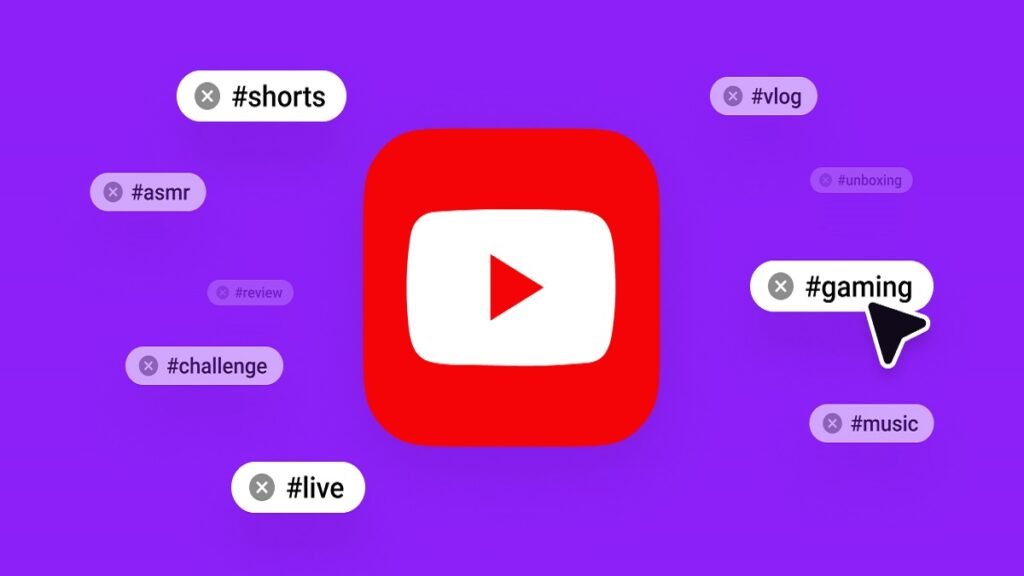YouTube has evolved from a video-sharing platform to one of the most powerful search engines in the world. With over 2 billion logged-in monthly users and more than 500 hours of video uploaded every minute, creators are constantly vying for visibility. As a result, understanding the ins and outs of YouTube’s algorithm is crucial for anyone looking to succeed on the platform. One of the most essential yet often overlooked tools in this quest for visibility is the importance of YouTube tags.
YouTube tags are keywords or phrases that creators add to their videos to help the platform’s algorithm understand the content of their videos. While tags don’t directly influence ranking as much as other factors like video title, description, and watch time, they remain a crucial part of YouTube’s search and discovery system. In this post, we will explore the key benefits of YouTube tags, highlighting their role in content discoverability, search optimization, audience targeting, and more.
Advantages Of YouTube Tags

1. Improved Search Discoverability
One of the primary functions and importance of YouTube tags is to improve the discoverability of a video through search. When users enter a query into the YouTube search bar, the platform relies heavily on metadata, including the title, description, and tags, to determine which videos are most relevant to that search. Tags serve as additional signals to YouTube’s algorithm about what a video is about, helping the platform to categorize and index the content more effectively.
For instance, if a user searches for “how to bake a chocolate cake,” YouTube will likely prioritize videos with relevant keywords in their titles, descriptions, and tags, such as “chocolate cake,” “baking,” and “easy recipe.” Without appropriate tags, a video may not appear in search results, even if the title and description are optimized. Therefore, tags play a key role in boosting a video’s chances of appearing in relevant searches.
2. Enhancing Related Video Suggestions
In addition to search results, YouTube’s recommendation algorithm also suggests videos to users based on their viewing history, preferences, and interactions. Tags influence this recommendation engine by providing additional context about the content. For example, if a viewer watches a video about baking cookies, YouTube may suggest other videos tagged with “baking,” “desserts,” or “cookie recipes.”
By including relevant tags, creators can increase the likelihood that their video will be suggested alongside similar content, increasing the chances of attracting new viewers. This is particularly important for smaller channels or creators who don’t yet have a large subscriber base, as recommendations can be a significant driver of traffic and views.
3. Improved Video Indexing and Categorization
YouTube tags help the platform better understand and categorize the content of a video. The benefits of YouTube tags essentially serve as metadata that describe the video’s subject matter in greater detail. For example, if a video is about fitness, the creator might use tags like “workout,” “exercise,” “strength training,” and “fitness tips.” This process of indexing and categorization makes it easier for YouTube to place videos in relevant categories and subcategories.
As a result, the video is more likely to surface when users browse through categories or related topics, enhancing its overall visibility. Additionally, YouTube can use tags to understand the broader context of the video. For instance, a video tagged with “vegan recipes” might be categorized within the “Food & Drink” section but also appear in subcategories like “Vegan” or “Healthy Eating.”
4. Targeting Specific Audience Segments
Using specific and relevant tags enables creators to target niche audiences more effectively. For example, a tech creator producing a video about the latest iPhone might use tags like “iPhone review,” “Apple products,” “smartphones,” or “mobile tech.” By doing so, they ensure that their video is more likely to reach viewers who are interested in those specific topics.
Tags can be used to fine-tune audience targeting by focusing on particular demographics, interests, or viewer behaviors. If a creator understands their audience and the type of content they consume, they can strategically use tags to increase the video’s visibility among users who are most likely to engage with it. This level of targeting helps creators connect with more engaged and interested viewers, improving overall watch time and engagement metrics.
5. Boosting Video SEO (Search Engine Optimization)
While YouTube’s algorithm is distinct from traditional search engines like Google, it still uses similar principles for indexing and ranking content. The importance of YouTube tags is a vital part of YouTube SEO, which is the practice of optimizing video content to rank higher in search results and recommendations. Tags are especially helpful for long-tail keywords—more specific phrases that may not have as much competition but still draw in targeted traffic.
For example, rather than just tagging a video with “fitness,” creators can use long-tail tags like “fitness for beginners,” “30-minute workout at home,” or “how to build muscle at home.” These longer, more detailed tags can help the video rank for more specific search queries, which can be valuable for creators who are targeting highly specific topics or underserved niches.
6. Improved Video Ranking
While YouTube does not rely solely on tags to determine video rankings, they can still play a supportive role in helping a video perform better in search results. The algorithm considers a combination of factors, such as watch time, click-through rate (CTR), likes, comments, and shares. Tags help the algorithm match a video with the right queries, contributing to the video’s visibility and, in turn, its performance.
In addition to titles and descriptions, tags also provide valuable context about a video’s content, which can affect how it is ranked among similar videos. The more relevant and comprehensive the tags are, the better YouTube can categorize and rank the video, potentially giving it a competitive edge over other videos with less accurate or relevant tags.
7. Improved Viewer Retention and Engagement
Viewer retention and engagement are crucial factors in YouTube’s ranking algorithm. The benefits of YouTube tags can play a subtle yet important role in improving these metrics by ensuring that videos reach the right audience. When a video is tagged accurately, viewers are more likely to click on it if it matches their search intent or interest.
For example, a well-tagged video is more likely to be suggested to viewers who have already watched similar content, meaning that the video will attract a more relevant audience. This can lead to higher click-through rates (CTR) and, more importantly, longer watch times, which are strong indicators to YouTube that the content is valuable and engaging.
Moreover, tags that reflect the video’s core themes or subject matter can help creators manage viewer expectations. When viewers find content that aligns with their interests, they are more likely to engage with the video by liking, commenting, or subscribing. This kind of engagement signals to YouTube that the video is resonating with the audience, potentially boosting its visibility and reach.
8. Adapting to Changing Trends and Audience Behavior
Another important advantage of YouTube tags is their ability to help creators adapt to evolving trends and changing audience behavior. YouTube trends can shift rapidly, and staying on top of popular topics is critical for creators who want to remain relevant. By continuously updating video tags to reflect trending keywords, creators can maintain or increase their visibility in a constantly changing landscape.
For example, during a major tech release, such as the launch of a new smartphone or operating system, creators can update their video tags to include relevant, trending keywords related to that launch. Similarly, creators who are aware of seasonal or cultural shifts can tag their videos with terms that reflect those changes, ensuring their content stays timely and discoverable.
This level of adaptability allows creators to capitalize on short-term trends while also focusing on long-term content strategies to build a loyal audience. The ability to quickly change or add tags based on audience preferences or market shifts is a powerful tool for content creators.
Wrapping Up
YouTube tags are much more than just an afterthought for video creators. The importance of YouTube tags plays a crucial role in enhancing discoverability, improving SEO, targeting specific audiences, and ultimately driving traffic to videos. Whether it’s increasing the chances of a video being recommended, improving its ranking in search results, or ensuring it reaches the right viewers, the importance of tags cannot be overstated.
In the competitive world of YouTube, where billions of videos are competing for attention, leveraging tags effectively is a simple yet powerful way to give content a better chance of standing out. By understanding the many roles that tags play—such as boosting search visibility, improving categorization, enhancing video ranking, and increasing engagement—creators can optimize their YouTube strategy and improve their overall performance on the platform.
While tags are just one component of a broader YouTube strategy, their significance should not be underestimated. When used thoughtfully, tags can help creators maximize their reach and impact, ensuring their videos are seen by the right audiences at the right time. As YouTube continues to evolve, so too should our understanding of how to use its tools most effectively, and tags will undoubtedly remain a central part of this process.
FAQ
Q: Do YouTube tags aid in the number of views?
A: One kind of information that you may use to inform the YouTube algorithm about your video is tags. After evaluating the video’s content for relevancy, the YouTube algorithm assigns it a ranking. Therefore, the more effective tags you employ, the more likely it is that your movies will rank higher and get more views.
Q: What is the ideal number of YouTube tags?
A: Most videos should, in general, include five to eight tags. Make sure to use the most effective descriptors so that YouTube can easily comprehend the topic of your video and your target audience can easily locate it.
Q: How do tags function?
A: A link to the person’s profile is created when you tag them. This implies that the individual’s timeline may also be updated with the post in which you tag them. For instance, you may publish a status update stating who you’re with or tag someone in a picture to indicate who’s in it.







